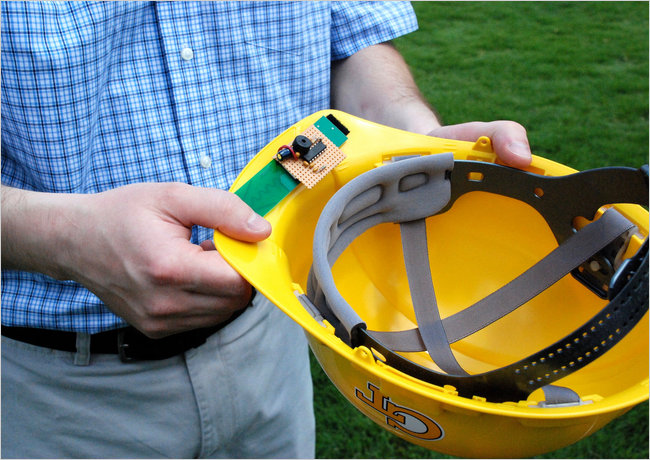Death to batteries, or radio waves as an alternative source of energy

Using only radiated radio waves, SmartHat warns its owner that there is dangerous construction equipment nearby.
Researchers at Duke University have come up with a method of using radio waves as power for small microprocessor-based devices that consume very little energy. Devices such as sensors that monitor critical environmental changes can be powered by radio waves.
')
Dr. Matthew Reynolds, an associate professor at Duke University, introduced a low-power device that was inscribed in a construction helmet. A device called SmartHat alerts you with a beep that dangerous equipment is near a construction site.
Radio waves emit wireless transmitters on excavators and bulldozers, used to track their location. The sensor in the owner's helmet monitors the power of the radio waves and warns the owner when the heavy equipment is too close.
Since radio waves quickly lose energy, very few people have studied this technology. Radio waves can already collect enough energy to replace AAA batteries in some calculators, temperature and humidity sensors, and watches.
Dr. Smith from Intel is studying electromagnetic and creating an electronic "collector" of radio waves. The collector accumulates enough energy to operate the thermometer and humidity sensor from a television tower located 2.5 miles from the laboratory. The device collects enough energy to produce about 50 µW of energy, enough for most sensors to work. For comparison: the solar calculator consumes 5 µW.
Smith and his colleagues also created a second radio-powered device that collects signals from an external weather station and transmits them to the display. The device can save enough energy to send a temperature update every 5 seconds.
via NYT .
Source: https://habr.com/ru/post/100112/
All Articles